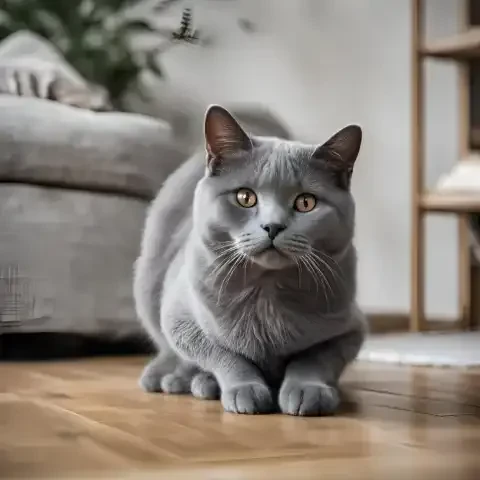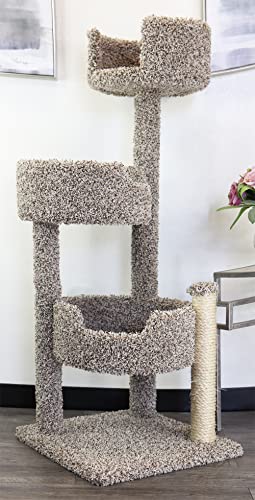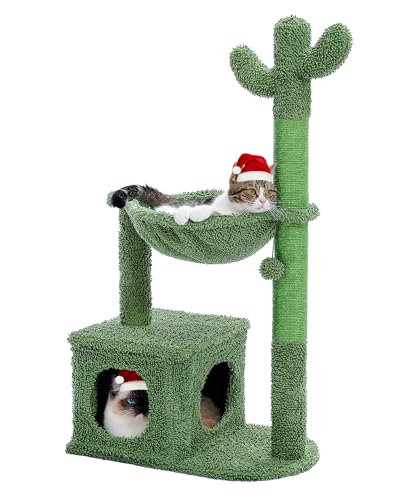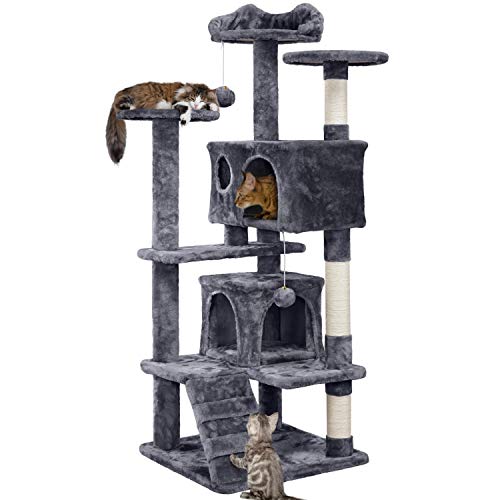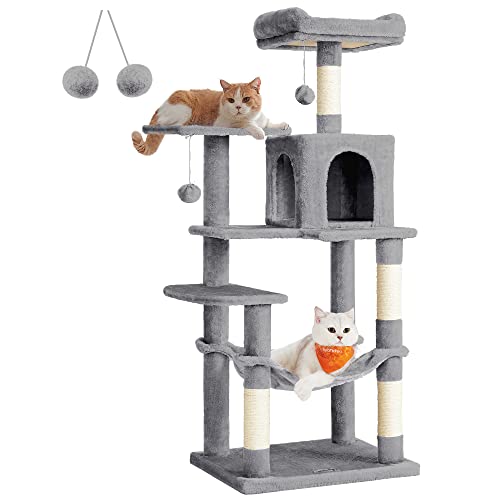Imagine a cat with a coat the color of twilight just before the stars fully emerge, a dense, plush cloud of blue-grey that seems to shift and shimmer in the light. Picture eyes like molten gold, luminous jewels set in a broad, softly rounded face, perpetually hinting at a smile. This is the Chartreux, a breed that embodies quiet elegance and gentle affection, a feline whispered about in hushed tones of admiration. To encounter a Chartreux is to be in the presence of something truly special, a creature whose beauty is both striking and understated, whose personality is both independent and profoundly devoted. Step back in time with this breed, shrouded in a delightful mystery and known for its calm, contemplative charm: the Chartreux cat. This is not a feline prone to dramatic pronouncements or attention-seeking antics. Instead, the Chartreux captivates with a serene grace, a quiet confidence that speaks volumes. Their presence is soothing, their demeanor gentle, their affection deep and unwavering. In this article, we embark on a journey to explore and celebrate the Chartreux cat, a breed that has quietly enchanted cat lovers for generations. We will delve into the captivating details of their elegant appearance, unravel the nuances of their affectionate and calm temperament, and trace the whispers of their rich and somewhat enigmatic history. We aim to illuminate why the Chartreux is not just a beautiful cat, but a truly unique and cherished treasure within the vast and wonderful world of felines, a breed that offers a particular kind of companionship, one marked by quiet devotion, subtle playfulness, and a timeless, understated elegance.
The first impression of a Chartreux is invariably dominated by their extraordinary coat, a "blue" unlike any other in the feline world. This is not a bright, vibrant blue, but rather a spectrum of soft grey hues, reminiscent of pewter or perhaps the smoke-tinged sky of a winter evening. The "blue-grey" can range from a lighter, silvery tone to a deeper, more charcoal shade, often exhibiting a subtle tipping or sheen that catches the light and gives the coat a luminous quality. It's a color that is both sophisticated and calming, perfectly mirroring the breed's overall gentle demeanor. Beyond its color, the Chartreux coat possesses a truly unique texture. It’s a dense, woolly double coat, designed to be water-repellent, a testament to the breed's robust, working cat heritage. Running your fingers through a Chartreux coat is like sinking into a plush, luxurious cloud. It's dense and substantial, yet surprisingly soft to the touch, offering a tactile experience that is as comforting as their gentle purr. Despite its density, the Chartreux coat is surprisingly low-maintenance. While regular grooming is still essential, they are not prone to excessive matting and are relatively good self-groomers. A few brushings a week, especially during shedding seasons, will keep their plush coat looking its best and minimize shedding around the house.
Beneath the luxurious coat lies a body that is a marvel of quiet strength. The Chartreux is described as "cobby," a term used in cat fancy to denote a body type that is sturdy, compact, and muscular. They are robust and well-built cats, possessing a surprising weight and substance when you pick them up. Their powerful build is often described as "substantial," conveying an impression of quiet strength and resilience. Yet, despite their muscular physique, the Chartreux retains an overall air of elegance and refined appearance. There's a beautiful balance to their build; they are not bulky or clumsy, but rather powerfully graceful, moving with a quiet confidence and agility. It’s been said that the Chartreux is like "a wolf in sheep's clothing," a creature that possesses an underlying strength and athleticism beneath a calm and gentle exterior. They are a medium to large-sized breed, but their compact build can make them appear smaller than they actually are. They are certainly not delicate or fragile cats; the Chartreux is built to be resilient and robust, a testament to their working cat ancestry.
The head of the Chartreux is as distinctive as their coat, contributing significantly to their overall charming appearance. It's a broad, rounded head, with well-developed cheeks that give their face a full, almost cherubic quality. It is the structure of these cheeks and mouth that contributes to the Chartreux's signature "smiling" expression. The slight upturn at the corners of their mouth, combined with the gentle curve of their cheeks, creates an endearing, perpetually amused look. This "smile," though purely anatomical, adds immeasurably to their gentle and approachable charm. Their jawline is strong and well-defined, reflecting their sturdy build, and their facial features are overall balanced and harmonious, contributing to their refined and pleasing aesthetic.
Perhaps the most striking feature of the Chartreux, after their coat, is their eye color. Their eyes are a mesmerizing shade of gold to copper, ranging in intensity and brightness but always possessing a deep, rich warmth. The golden hues can vary from a lighter, lemon gold to a deeper, almost burnished copper, but all shades share a captivating luminosity. The contrast between these warm, golden eyes and the cool, blue-grey coat is truly striking, creating a visual appeal that is both arresting and harmonious. The eyes themselves are rounded and expressive, contributing to their overall gentle gaze. There is a depth and intelligence in the Chartreux's eyes, a quiet knowing that adds to their enigmatic charm.
The tail and paws of the Chartreux are often described as "finishing touches" that complete their elegant and balanced physique. The tail is medium in length, proportionate to their body, and tapers gracefully to a rounded tip. It is neither overly bushy nor whip-like, fitting seamlessly with their overall balanced proportions. Their paws are medium-sized, often described as rounded and neat, perfectly complementing their sturdy legs and compact body. Every aspect of the Chartreux's physical appearance, from the tips of their paws to the curve of their smile, contributes to their overall impression of quiet elegance and refined charm, a study in understated beauty.
Beyond their captivating appearance, it is the Chartreux temperament that truly endears them to those who know and love the breed. They are often described as "gentle giants," a fitting moniker for their calm and affectionate nature. The Chartreux is, above all else, a quiet companion, possessing a naturally gentle demeanor and a remarkably low-key personality. They are not demanding cats, not prone to incessant meowing or attention-seeking behaviors. Their presence is peaceful and unobtrusive, making them ideal companions for those seeking a calm and tranquil feline friend. While they are certainly capable of vocalizing, their meows are often soft and infrequent, used sparingly and purposefully, rather than as a constant demand for attention. This quiet nature, combined with their adaptable personalities, makes them well-suited to a variety of living environments, from bustling family homes to quiet apartments. They are cats who appreciate a calm and predictable routine but are also generally tolerant of change and adaptable to different lifestyles.
Beneath their quiet exterior lies a heart full of affection and devotion. The Chartreux forms deep and lasting bonds with their families, exhibiting a profound loyalty and attachment to their chosen humans. They are devoted companions who thrive on human company and genuinely enjoy being near their people. They may not be overly demonstrative in their affection, not demanding constant petting or lap time, but their love is evident in their quiet presence, their gentle nudges, and their contented purrs when settled beside you. They are the kind of cat who will follow you from room to room, not necessarily seeking constant interaction, but simply wanting to be in your vicinity, a silent, comforting presence. Their affection is expressed in subtle ways: a gentle head bump against your leg, a quiet settling onto the sofa beside you, a slow blink of their golden eyes – these are the hallmarks of Chartreux love, understated yet deeply meaningful.
Despite their calm demeanor, the Chartreux is by no means a dull or inactive cat. They possess a playful and intelligent nature, enjoying games and toys, and exhibiting a surprising agility when motivated. They are not typically hyperactive or overly energetic, but they do appreciate regular playtime and benefit from mental stimulation. They are clever cats, known to be quick learners and enjoy puzzle toys and interactive games that challenge their minds. A game of fetch with a favorite toy, a playful chase after a feather wand, or the challenge of a treat-dispensing puzzle – these are all activities that a Chartreux will engage in with quiet enthusiasm. Their energy levels are moderate; they appreciate a good play session but are equally content to relax and observe the world from a comfortable perch, striking a beautiful balance between playful engagement and peaceful repose.
The Chartreux also possesses a socially graceful nature, generally getting along well with children and other pets when properly introduced and socialized. Their patient and tolerant disposition makes them excellent family cats, capable of handling the often-unpredictable energy of children with gentle understanding. They are not easily ruffled or prone to aggression, making them a safe and reliable companion for families with children. Similarly, they can adapt well to multi-pet households, coexisting peacefully with dogs and other cats, particularly if raised together or introduced gradually and respectfully. While individual personalities will always vary, the Chartreux breed standard emphasizes a gentle and adaptable nature, making them generally well-suited to sharing their homes with other animal companions.
Perhaps one of the most appealing aspects of the Chartreux temperament is their perfect balance of independence and sociability. They are not clingy or overly dependent cats, not prone to separation anxiety or constant demands for attention. They are content to entertain themselves, to explore their environment, and to enjoy periods of solitude. Yet, they also genuinely cherish human company and thrive on the quiet affection of their families. They are cats who are happy to be with you, to share your space and your life, but who also respect your boundaries and are not constantly demanding your attention. This blend of independence and devotion is what makes the Chartreux such a uniquely appealing companion – a cat who is both present and respectful, affectionate yet not overwhelming, a gentle giant who enriches your life with their quiet charm and unwavering loyalty.
The history of the Chartreux breed is as captivating and enigmatic as the cats themselves. Whispers from the past link them to French monasteries, specifically the Carthusian order, a monastic community known for their vows of silence and contemplative lifestyle. The romantic legend suggests that Chartreux cats were bred by Carthusian monks in France, perhaps as early as the 16th century, to serve as both efficient mousers in their quiet monasteries and as cherished companions in their solitary lives. The image of serene monks and equally serene blue-grey cats sharing a life of quiet contemplation is undeniably appealing, adding a layer of mystique and historical charm to the breed. However, it's important to acknowledge that concrete historical evidence definitively proving this monastic origin is scarce. While the legend persists, historical records directly linking Chartreux cats to Carthusian monasteries are elusive, adding to the breed's intriguing mystery.
In the absence of definitive proof of monastic origins, alternative theories and speculation about the breed's ancestry abound. Some theories suggest that Chartreux cats may have originated from natural populations of blue-grey cats that existed in France for centuries, developing their distinctive characteristics through natural selection rather than deliberate breeding within monasteries. Other theories propose origins further afield, suggesting possible links to blue-grey cats found in the Middle East, potentially brought to France by traders or returning Crusaders. The very name "Chartreux" is itself a subject of debate, with various theories linking it to "Piles de Chartreux," a type of Spanish wool known for its distinctive blue-grey color, or even to the famous Chartreuse liqueur, although the liqueur's vibrant green hue presents a color mismatch. The lack of definitive written records from the breed's earliest centuries only deepens the historical mystery, leaving room for romantic legends and plausible speculation to intertwine.
Despite the uncertainties surrounding their earliest origins, Chartreux-like cats begin to emerge more clearly in the written record from the 18th century onwards. Cats closely resembling the Chartreux description appear in French literature and natural history writings of this period, suggesting that a recognizable type of blue-grey cat was indeed present in France at this time. Renowned naturalists like Buffon made mention of grey cats in France that align with the characteristics of the Chartreux, and artists of the era occasionally depicted cats with the distinctive blue-grey coat and robust build. While these mentions don't definitively trace the breed's lineage back to monasteries, they do solidify the Chartreux's presence in French history, indicating that a distinct and recognizable blue-grey cat type was known and appreciated in France centuries ago.
The formal development of the Chartreux as a recognized breed began in France in the early 20th century. Sisters Christine and Marguerite Le Guay played a pivotal role in establishing the breed, developing a breeding program on Belle-Île-en-Mer, an island off the coast of Brittany. They gathered local blue-grey cats that conformed to the emerging breed type and began a deliberate effort to preserve and refine the Chartreux. Early breed standards were developed, focusing on the distinctive blue-grey coat, golden eyes, cobby build, and gentle temperament, laying the foundation for the Chartreux breed as we know it today.
The path to breed recognition was not without its challenges. The Chartreux breed faced near extinction following World War II, as populations dwindled due to wartime hardships and limited breeding stock. It was thanks to the dedicated efforts of passionate breeders in France and beyond that the Chartreux was revived and re-established in the post-war era. Slowly but surely, through careful breeding programs and unwavering dedication, the Chartreux population recovered, and the breed began to gain recognition from major cat registries around the world. Today, the Chartreux is recognized by all major cat registries, including the Cat Fanciers' Association (CFA), The International Cat Association (TICA), and Fédération Internationale Féline (FIFe). While still considered relatively rare compared to more popular breeds, the Chartreux has a devoted following of admirers who appreciate their unique blend of elegance, affection, and historical mystique. The Chartreux of today stands as a testament to the enduring appeal of this elegant and gentle breed, a quiet whisper from the past that continues to captivate cat lovers with its timeless charm.
Caring for a Chartreux is a relatively straightforward endeavor, reflective of their robust and adaptable nature. Maintaining their plush coat is easier than one might expect given its density. Regular brushing several times a week is generally sufficient to prevent matting and minimize shedding, especially during
The Chartreux cat is more than just a beautiful feline; it is a living embodiment of quiet elegance, affectionate companionship, and centuries of whispered history. Their signature blue-grey coat and mesmerizing golden eyes are instantly captivating, drawing you into their gentle and understated world. Their calm and devoted temperament offers a unique kind of companionship, one marked by loyalty, subtle playfulness, and a peaceful presence that enriches any home. And their mysterious historical origins, shrouded in legends of French monasteries and centuries of quiet presence, add a layer of timeless charm and intrigue. If you are seeking a feline companion who is intelligent, affectionate, adaptable, and possesses a quiet, understated elegance, the Chartreux cat may be the perfect breed for you. They are ideal for individuals or families seeking a devoted and gentle companion, someone who appreciates a cat who is both independent and deeply connected, playful yet peaceful, and possesses a beauty that is both striking and subtly refined. Bringing a Chartreux into your life is not just welcoming a pet, but embracing a piece of feline history, a creature whose gentle charm and quiet devotion have resonated through generations. The Chartreux cat stands as a living testament to the enduring appeal of understated elegance and affectionate companionship, a gentle whisper from the past that continues to captivate cat lovers today, offering a unique and cherished presence in the modern world.
